Oesper Collections in the History of Chemistry
Dedicated at the University of Cincinnati in Ohio on March 15, 2022.
The Oesper Collections represent one of the world’s largest curated collections of scientific artifacts, books, journals, photos, and prints related to the history of chemistry. These resources bring the field’s rich historical heritage to life. At the same time, they reveal the importance of chemistry in society and show how this central science touches everyday life. And they demonstrate that embracing the past is essential to understanding the foundations of chemistry, as well as its present and future.
The holdings — which date from the 16th through the 21st centuries — are available to view and study at the University of Cincinnati in the Department of Chemistry. Chemists, students, historians, and the public will find a wide range of attractions within the Oesper Collections. Some visitors will be drawn by rare and ancient leather-bound books, such as “Elemens de Chymie,” French for “Elements of Chemistry,” which was published in 1624 — just a few years after the death of William Shakespeare. Others will be attracted by equipment including a reproduction of an 18th century retort used to separate and purify liquids, a device from around 1915 to monitor the fermentation of beer, a folding pocket camera from 1902, and an electron microscope from the 1960s.
Contents
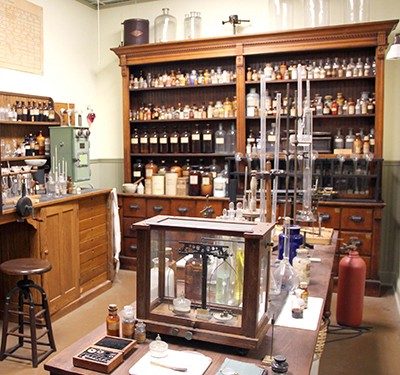
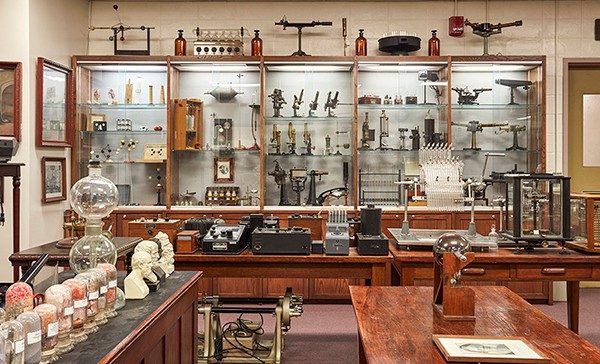
View larger image
Origins
The collections are a joint project of the chemistry department and the university’s library system. They were founded in 1986 by William B. Jensen, the Oesper Professor of Chemical Education and History of Chemistry. This position was endowed by Professor of Chemistry Ralph E. Oesper (1886-1977) to the eventual sum of $4.5 million to support scholarly activities in the history of chemistry.
Upon taking up the role, Jensen found a small collection of historically significant books and chemical journals acquired by Oesper, as well as photographs and prints related to the history of chemistry. Jensen used part of the endowment to expand these holdings. As a result, the book and journal collection now includes approximately 28,000 volumes, while the photo and print collection comprises roughly 2,500 items. In addition, Jensen contributed his own collection of antique chemical apparatus to establish a third component of the Oesper collections. This historical apparatus museum now contains approximately 4,000 artifacts.
Since 1998, the collections have been housed in two large rooms in the chemistry department, one devoted to the book, journal, print, and photo collections, and the other to the apparatus museum, the storerooms, and a small area for restoration work.
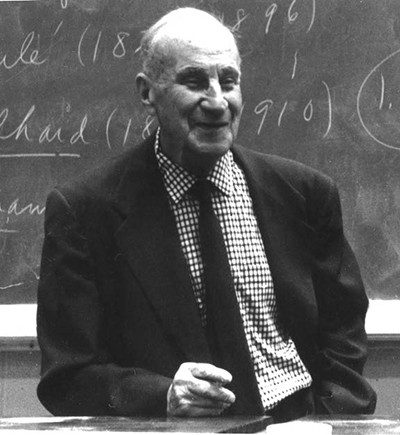
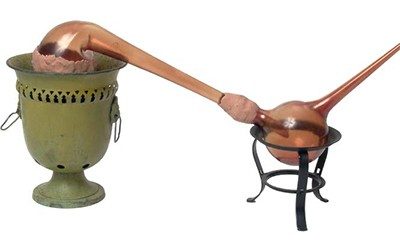
The nature of the collections
Many of the apparatus artifacts are displayed in glass-fronted cases in the museum and elsewhere in the chemistry department. These examples of apparatus used by chemists over the past four centuries include original items, restorations, and reproductions. Originals date from the late 19th to the 20th centuries, and restorations date from the mid-19th century. Jensen and Rudy W. Thomas, the chemistry department demonstrator, created the reproductions of equipment from the 17th to the early 19th centuries. That was necessary because almost no chemical glassware from before the late 18th century has survived intact. In fact, that’s a universal problem — most similar items in European museums from this early period are also reproductions.
Among the displays are balances and weights, heating devices, volumetric apparatus, basic apparatus (flasks, beakers, test tubes, etc.), and laboratory hardware (stands, clamps, stirrers). Also represented are apparatus related to distillation, organic combustion analysis, pneumatic chemistry, electrochemistry, molecular weight determinations, melting and boiling point determinations, gas analysis, and devices for filtration, sedimentation, and extraction. The museum also contains molecular and crystal models, chemical slide rules, mechanical and early electronic calculators, and 3D periodic tables, as well as instruments including microscopes, colorimeters, spectroscopes, spectrophotometers, and pH meters.
One of the main attractions of the museum is the reproduction of an early-1900s chemical laboratory, complete with a period fume cupboard and a glass-blowing setup. It can be viewed from the museum proper through a floor-to-ceiling plate glass window that serves as one wall of the laboratory.
The print and photo collection is particularly strong on portraits of German chemists from 1920-50 that were personally acquired by Oesper during his annual trips to Germany; many of them are autographed.
Some of the most valued holdings include an autographed photo of Niels Bohr (1885-1962) and a Christmas card from Henri Le Chatelier (1850-1936). Several prints are framed and on display in the library, but the majority are stored in the large shallow drawers of a 1910 oak cabinet formerly used for mineral specimens. Images from the photo and print collections are available for study and use by chemical historians, and reproductions can be used in textbooks and monographs on chemistry.
The collections contain more than 6,600 bound journal volumes, encompassing nearly 200 different titles — some dating back to the 18th century — as well as 21,000 books spanning the 16th through the 21st centuries. They include period textbooks and monographs, biographies of famous chemists, and histories of chemistry, physics, and general science. The books and journals can be used at the library but do not circulate to other institutions.
Prized items in the books and journals collection include an anonymous 18th century alchemical manuscript and an autographed copy of the 1912 translation — by future U.S. President Herbert Hoover and his wife, Lou Henry Hoover, a fellow geologist and Latinist — of Georg Agricola’s “De re metallica,” the landmark 16th-century treatise on mining and metallurgy.
Pre-1850 books are housed in large, glass-fronted cases, while the remainder rest on conventional open library shelving with period oak end panels.
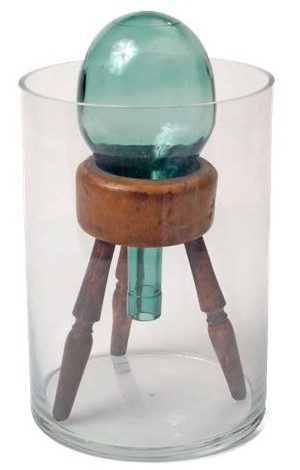
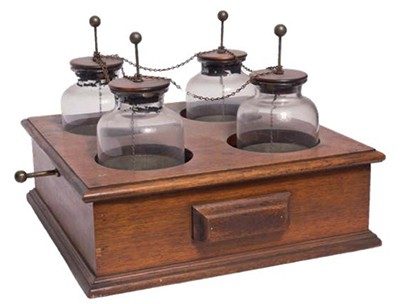
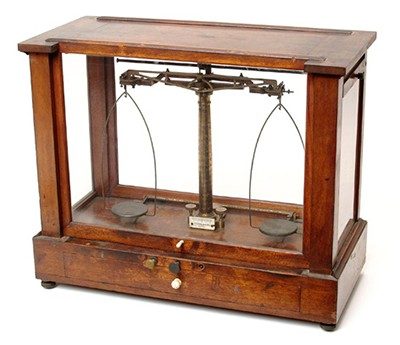
Collection policy
Aside from Jensen’s personal apparatus collection, which formed the nucleus of the museum, the vast majority of its holdings are donations from laboratories around campus and from more than two dozen U.S. colleges and universities. Most items were acquired between 1986 and 1998, when Jensen was regularly invited by various small colleges and schools to give seminars on the history of chemistry; during those trips, he often visited chemistry departments’ storage areas. Other significant donations have come organically, including the M.G. Mellon Colorimeter and Spectrophotometer Collection, the O. B. Ramsay Molecular Model Collection, the Oberlin College Electrochemical Cell Collection, and the McGowan Chemistry Set Collection. In some cases, other museums, such as the Smithsonian and the Paselk Instrument Collection, have donated duplicate items from their holdings.
In 2008, the museum’s displays were first posted online, and this is now the most important stimulus for donations. Thus in 2010, a donor in Colorado who had visited the website offered the museum a 1950s-era Craig countercurrent distribution train, which was used for extraction and purification in biochemistry. A description of this instrument on the museum’s website inspired, in turn, a donor in California to give an even earlier cylindrical version of Craig’s apparatus in 2014. All of this means that, despite an ample endowment, very few of the museum’s acquisitions have been purchased from antique dealers.
Aside from being relevant to chemistry, the only restriction on adding to the collections is “The Sherman Tank Rule.” This refers to the massive vacuum-tube-based instruments that became common in chemistry after World War II. During that time, there was a rise of commercial mass spectrometry, nuclear magnetic resonance spectrometry, and electron spin resonance spectrometry. Though various instruments from this period have been offered, both their bulk and weight have precluded adding them to the collections. In short, if an item is too big to fit in a display case, it is generally turned down. However, recent exceptions include a Siemens Elmiskop IA electron microscope from the mid-1960s and a Varian E-4 electron paramagnetic resonance spectrometer from the early 1970s. The university libraries made space for the instruments’ display in the former chemistry-biology library.
In contrast to the apparatus collection, virtually all additions to the book and journal collection have been purchased from used book dealers throughout the world using Oesper Endowment funds. Though English, German, or French are preferred, items in other languages, such as Chinese, Japanese, and Latin, are in the collection. While the collections contain many secondary studies of alchemy and a few primary documents, the official collection policy favors the purchase of non-alchemical works.
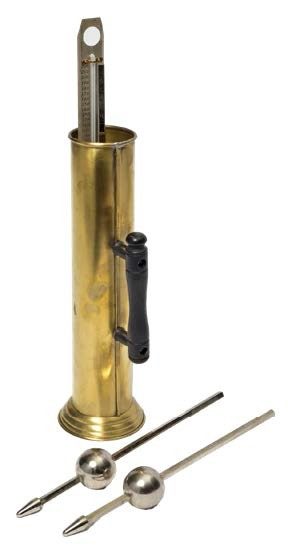
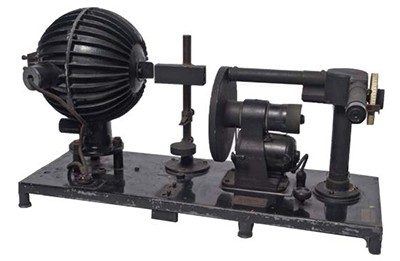
Museum notes and booklets
Starting in 2010, the museum began publishing a bimonthly feature called Museum Notes to highlight specific artifacts in the collections. Although items in the book and journal collection and the photo and print collection have been included, most featured objects are from the apparatus museum. To date, 58 issues of Museum Notes have been posted on the museum website.
Only 25% of the complete collection is on display. So in 2014, a series of museum booklets was initiated to make the rest of the collection publicly available. Each booklet is dedicated to a particular instrument or laboratory technique and includes photographs of both displayed and stored museum artifacts related to the subject at hand. The booklets, which are posted on the museum’s website, describe the history of the instrument or technique and its impact on the development of chemistry as a whole. The goal is to publish 30 volumes to cover all of the museum’s significant holdings.
Arranging a visit
The collections are open to the public by appointment. Extended access to the library facilities is available for scholars. Those wishing to tour the museum or use the library collections may contact the University of Cincinnati Department of Chemistry. Details about the collections can be found on the museum’s website.
Among the many who deserve acknowledgment for the success of the collections are Thomas, a chemistry department demonstrator and research professional who has provided skilled restoration work and conducts museum tours, as well as John H. Tebo and Ted Baldwin of the University of Cincinnati Libraries, who have played a significant role in building the book and journal collections.
The collectors
Born in Cincinnati on June 14, 1886, Ralph E. Oesper first became interested in chemistry through the influence of his high school chemistry teacher, Herman Newman, who had received a Ph.D. in Germany for work done under the direction of August Wilhelm Hofmann (1818-1892), a famous German chemist. This personal link with the past was the origin of Oesper’s later interest in the history of chemistry and chemical biography.
Oesper began his university training in chemistry at Purdue University and later transferred to the University of Cincinnati, where he received an A.B. degree in 1908, followed by an A.M. degree the next year. After two years working as an analytical chemist and as a high school chemistry teacher, he returned to the University of Cincinnati, where he completed his Ph.D. in chemistry in 1914 for work done under the direction of Lauder W. Jones (1869-1960). While finishing his doctorate, he also served as assistant professor of chemistry and German at the Ohio Mechanics Institute (which was later incorporated into the University of Cincinnati). After graduation, Oesper taught at New York University and Smith College before returning once again to the University of Cincinnati in 1918, first as an associate professor and then as a full professor.
An author and/or translator of over 300 papers and books in the history of chemistry and in the fields of colloid and analytical chemistry, Oesper was an active member of the ACS Division of the History of Chemistry since its inception and recipient of its first Dexter Award for his outstanding contributions to the field. Though Oesper formally retired in 1951, he remained active until his death at age 91 on Dec. 10, 1977. His endowment to the University of Cincinnati funded the establishment of the Oesper Museum, Book, Journal and Print Collections in the History of Chemistry.
William B. Jensen was born in Marshfield, Wisconsin, on March 25, 1948. An avid amateur chemist since grade school, he first became interested in the history of chemistry in the 7th grade as a result of reading “Discovery of the Elements,” a book by chemist and historian Mary Elvira Weeks (1892-1975). He received chemistry degrees from the University of Wisconsin, culminating with a Ph.D. in 1982. He is currently emeritus professor of history of chemistry and chemical education at the University of Cincinnati, where he also serves as curator and founder of the university’s Oesper Museum, Book, Journal and Print Collections in the History of Chemistry.
A former chair of the ACS Division of the History of Chemistry and founding editor of the Bulletin for the History of Chemistry, Jensen has authored more than 250 papers and books in the history of chemistry and in inorganic chemistry. He received the ACS History Division’s Edelstein Award for outstanding contributions to the field. He recently completed the manuscript for a history of chemistry textbook entitled “Philosophers of Fire: An Illustrated Survey of 600 Years of Chemical History for Students of Chemistry.”
Other Collections with Landmark Status
Two other collections have been designated as National Historic Chemical Landmarks: the Edgar Fahs Smith Memorial Collection at the University of Pennsylvania, one of the foremost international historical collections of chemistry books and manuscripts; and the Williams-Miles History of Chemistry Collection at Harding University, one of the leading historical collections of chemistry books in the southern U.S.
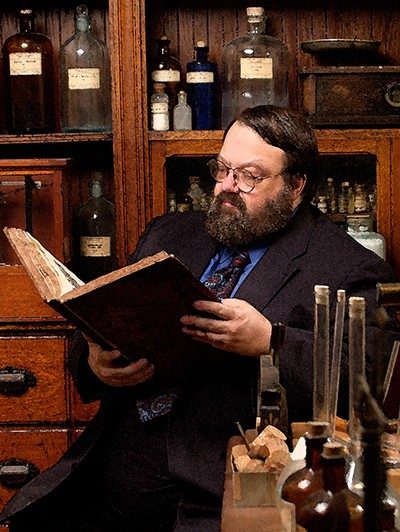
Landmark dedication and acknowledgments
Landmark dedication
The American Chemical Society (ACS) honored the Oesper Collections in the History of Chemistry with a National Historic Chemical Landmark (NHCL) designation in a ceremony at the University of Cincinnati in Ohio on March 15, 2022. The commemorative plaque reads:
The Oesper Collections represent one of the world’s largest curated collections related to the history of chemistry. Founded in 1986 by Professor William B. Jensen, using an endowment from Professor Ralph E. Oesper (1886-1977), they include 4,000 scientific artifacts, 2,500 photos and prints, and 28,000 books and journals dating from the 16th through the 21st centuries. The collections — which are supported by the University of Cincinnati’s Department of Chemistry and the University Libraries — bear testament to chemistry’s rich historical heritage and its importance in society. They show how chemistry touches everyday life, and they demonstrate that embracing the past is essential to understanding the field’s foundations, as well as its present and future.
Acknowledgments
Written by the University of Cincinnati.
The author wishes to thank contributors to and reviewers of this booklet, all of whom helped improve its content, especially members of the ACS NHCL Subcommittee.
The nomination for this Landmark designation was prepared by the University of Cincinnati and the Cincinnati Section of the ACS.
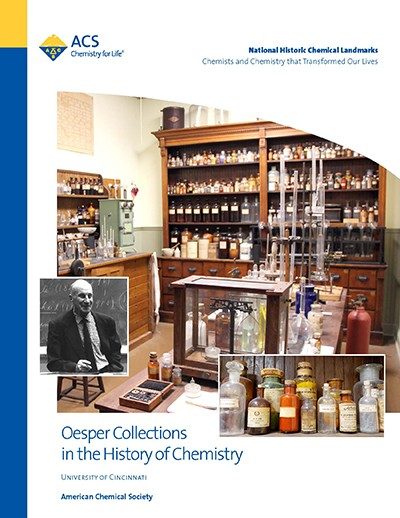
Booklet PDF
Additonal resources
Further reading
- Oesper Collections (University of Cincinnati)
- Notes from the Oesper Collections (UC)
- Oesper Museum Booklets on the History of Chemical Apparatus (UC)

